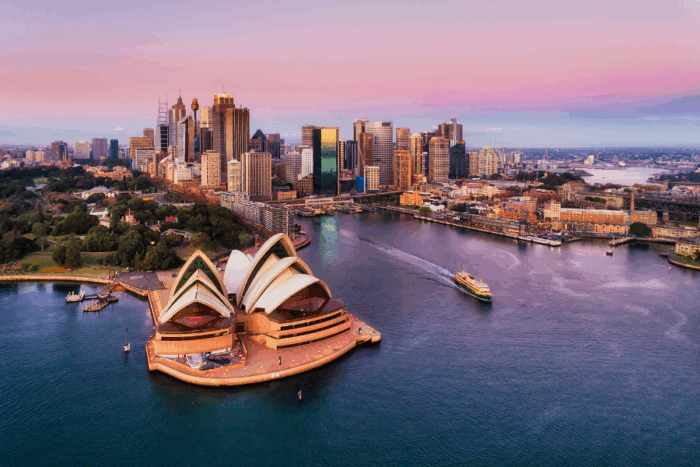The A$3 Million Question – Australia’s Division 296 Tax Plan
May 29, 2025
The ground beneath Australia’s high-balance superannuation accounts is shifting, with a new proposal set to change how wealth is taxed.
The new Labor government has revealed plans to reintroduce ‘Division 296’, a change that would introduce a 15% charge on superannuation earnings exceeding A$3 million.
The charge, set to be implemented on July 1, 2025, will be in addition to the existing 15% tax, effectively creating a 30% tax rate on the balances of retirement savings above the A$3 million threshold.
But it’s the inclusion of another aspect of the proposed legislation that’s grabbing the headlines – the government plans to target unrealised capital gains tax, as well as realised profits.
Taxing profits before they are actually banked as cash is, in fact, a fundamental shift from Australia’s existing approach, where capital gains are generally only taxed after a sale.
It’s the latest blow to wealthy Australians already reeling from soaring living costs and a heavy tax burden, prompting both long-term citizens and international investors to reconsider whether Australia is still worth calling home.
According to official statistics, permanent departure figures are up by more than 11% year-on-year, and this latest plan has not been well received by wealthy Australians, who may face unprecedented liquidity challenges as a result of the move.
The tax will apply to the 2025/26 financial year, so there’s still time to assess personal situations and implement strategies to minimise the new levy’s impact, which the Australian Treasury projects to generate A$2.3 billion by 2027–28 and around A$40 billion over the coming decade.
Australia’s Unrealised Gains Tax: What’s Happening?

The new tax proposal, if enacted, which seems likely, will mean an additional 15% tax on the earnings of superannuation balances exceeding A$3 million.
But the most controversial aspect centres on changes to what exactly is taxed. Traditionally, capital growth is only taxed when the gain is ‘realised’ but Division 296 would apply an annual tax to the unrealised increase in an asset’s value, its ‘paper’ value, even if it remains within the fund.
While the government suggests this aims for ‘fairness’, it certainly opens up fresh debate about liquidity and how such assets are valued year-on-year.
How the New Unrealised Gains Tax Would Work
Getting to grips with how this new Division 296 tax applies and would actually work can feel complex. It’s not just an additional tax; instead, it introduces new ways of valuing superannuation assets.
One critical factor to note is that the A$3 million threshold isn’t tied to inflation. While Division 296 is expected to affect around 80,000 citizens in its first year, the fixed nature of the cap means that – over time, as investment values grow – many more Australians could find their superannuation balances crossing the threshold.
A fund comfortably below the threshold today might exceed it in a decade through normal investment growth and inflation.
Valuation gets tricky, too, especially for self-managed super funds (SMSFs) holding assets like unlisted private company shares or direct property.
Annually pricing assets that aren’t regularly traded isn’t a simple task, potentially leading to disagreements and higher tax compliance and advisory costs.
In addition, the definition of ‘earnings’ itself is broader than just realised profits. The calculation considers the change in your total super balance, which includes those ‘paper’ gains.
The upside is that if your investments show a paper loss, this can generally be carried forward to reduce taxable superannuation earnings in subsequent years.
The worry, though, consistently voiced by tax professionals, is the potential for double taxation. Could the same gain be effectively taxed under this new measure and then again under the usual capital gains tax when the asset is eventually sold?
As the Institute of Public Accountants notes, this question and the demands of annual valuations also point to increased administration and higher audit costs for those with affected superannuation funds.
What This Tax Means for Your Wealth
If it proceeds as planned, Division 296 tax warrants a major re-evaluation for those with superannuation balances near or over the A$3 million mark.
For starters, you’ll almost certainly need to re-examine your investment approach.
Having to pay tax each financial year on ‘paper’ profits means you might need to pay taxes on profits you haven’t even made yet. Some people might be forced to sell high-performing assets earlier than they’d like.
Peter Burgess, CEO of the SMSF Association, told media, ‘Trustees might need to sell assets just to pay a tax bill on money they don’t yet have’.
It could even steer investments towards safer, more liquid options with potentially lower growth or deter the backing of longer-term projects.
The Tax Institute has voiced major concerns here, stating that the ‘liquidity to pay the tax, the valuation of assets, and the potential for an individual’s superannuation balance to be significantly eroded by market volatility’ are primary concerns.
On top of this, add in the headache of valuing those harder-to-price assets with the tax on paper gains and the compliance work.
It’s enough to make some people think twice about whether a Self-Managed Super Fund, particularly with these kinds of assets, still stacks up.
Will Wealthy Australians Leave?
Talk of a wealth flight often follows new tax proposals like Australia’s Division 296. The scare tactics are usually designed to grab headlines, but the reality of affluent people actually packing their bags is usually a more complicated story.
Some voices, particularly international ones, suggest it’s a real risk. For example, lawyer David Lesperance has warned of a potential ‘millionaire exodus,’ arguing that today’s ‘super rich are no longer sticky’ when faced with hefty new taxes, especially on ‘paper’ gains.
And that’s true – wealthy people and their money can move more easily around the world these days.
Against that, Australia itself has a powerful pull. For years, it’s been a top destination for the world’s wealthy – loved for its lifestyle, stability and absence of inheritance tax.
On top of that, moving countries is a decision that is often tangled up with business, family, and financial ties that aren’t easily broken.
Still, the country is getting bogged down in policies that cause high taxes, high cost of living and expensive housing. As noted above, permanent departure figures are up 11% annually, so many are already voting with their feet.
What about Australia’s Economy? The Bigger Picture
Beyond individual bank balances, this new tax could send ripples through the broader Australian economy.
Superannuation funds are big investors, after all, and if this tax makes them more cautious, less money might flow, especially into the bold, new ideas that fuel innovation and entrepreneurship.
Such a danger also quietly tweaks Australia’s financial position on the world stage. Financial analysts, like those at Wilson Asset Management, have voiced concerns, warning of a potential ‘deadweight loss’ or drag on the economy, as such changes can reshape where capital is invested.
Planning for the Division 296 Tax Changes
While the precise details of the Division 296 tax won’t be available until the law is officially passed, early preparation for its introduction is advisable.
That means reviewing superannuation balances, identifying assets (especially anything illiquid) and assessing unrealised gains. Once the current position is establishing, established strategies needs to be carefully stress-tested to evaluate their resilience to the proposed tax rules.
Equally important is planning how to source liquidity or cash to cover any tax liabilities from gains that remain unrealised.
What Next?

When Australia’s financial goalposts shift suddenly, such as with the Division 296 proposal, it causes havoc with financial plans.
Inevitably, it means a complete overhaul of the existing plan and that’s difficult to do when you’re up against a tight deadline.
Often, true financial security in changing times isn’t just about local adaptation but smart global structuring. A broader, diversified outlook makes all the difference.
That’s our specialty at Nomad Capitalist. Our team crafts holistic international plans to legally lower your taxes and diversify your wealth safely beyond any single country.
To see how global thinking can secure your wealth against shifts like Division 296, get in touch today.



Property Taxes in Portugal: Annual Rates and Rules for Expats
Purchasing property in Portugal is often a more affordable investment than buying real estate in countries like the U.S., making it an attractive option for expats. However, real estate owners are subject to different tax rates depending on the property’s value and its intended purpose. To help you understand property taxes in Portugal, this guide […]
Read more

An Expat’s Guide to Portugal Tax Residency
Relocation to Portugal can change your tax circumstances significantly if you decide to become the country’s resident. Familiarizing yourself with the rights and obligations of Portugal tax residency before relocating can help you weigh your options and plan accordingly. This guide will cover the most important aspects of Portugal tax residency, specifically: When Do You […]
Read more

Does Puerto Rico Pay Taxes to the US?
It’s a common question and one that often fuels confusion, debate, and a fair share of misinformation – Do residents of Puerto Rico actually pay US federal taxes? When most people think of US tax obligations, they naturally assume they apply uniformly across all US citizens. But when it comes to Puerto Rico, things are […]
Read more




